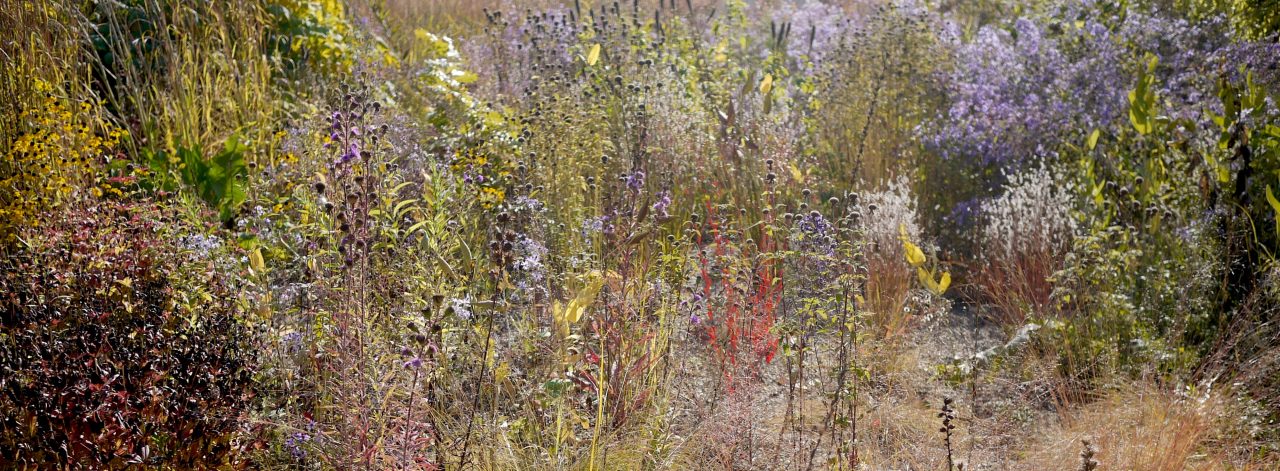
As gardeners we’ve long taken a painterly approach to our perennial gardens, selecting plants for height, shape, and colour without much regard for how they occur in the wild beyond a cursory glance at their sun and moisture requirements.
In more recent years, and especially with regard to climate change, declining insect populations, and other worrying global trends, our interest has been increasingly turning to wild and wildlife gardens. Turning to nature has several advantages. Not just practical matters of natural weed suppression, or supporting wildlife, but how species mix with each other, and how to structure plantings to create a more natural effect.
One of the popular modern planting styles for sunny gardens is the ‘prairie style garden’. But what exactly is a prairie and how can something which once covered over a million square kilometres in the US alone be translated into typical garden?
The classic North American prairie occupies much of the US Midwest where glaciers displaced by the Rocky Mountains left deep, fertile mineral deposits across the plains of the central continent. Where the mountains cast a rain shadow from the Pacific winds, the drier climate gives rise to the so-called ‘short grass prairie’ with conditions similar to the ‘steppe’ plantings of Russia. As you proceed east and the rains increase you pass through the mesic and later wetter areas of the ‘tall grass prairie’ stretching from the Canadian border south through Iowa, Illinois, and Missouri.
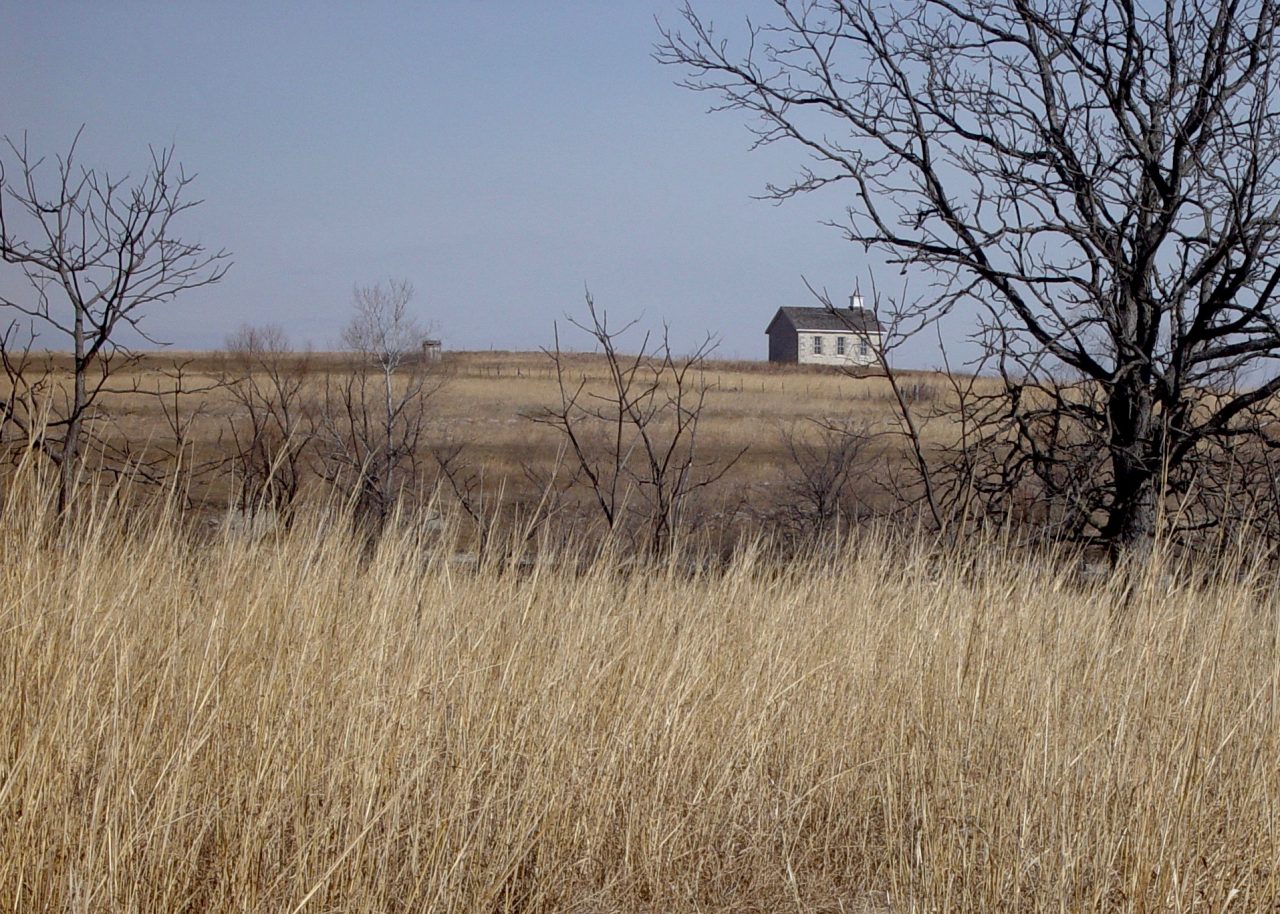
Kansas tall grass prairie/image by Rick Darke
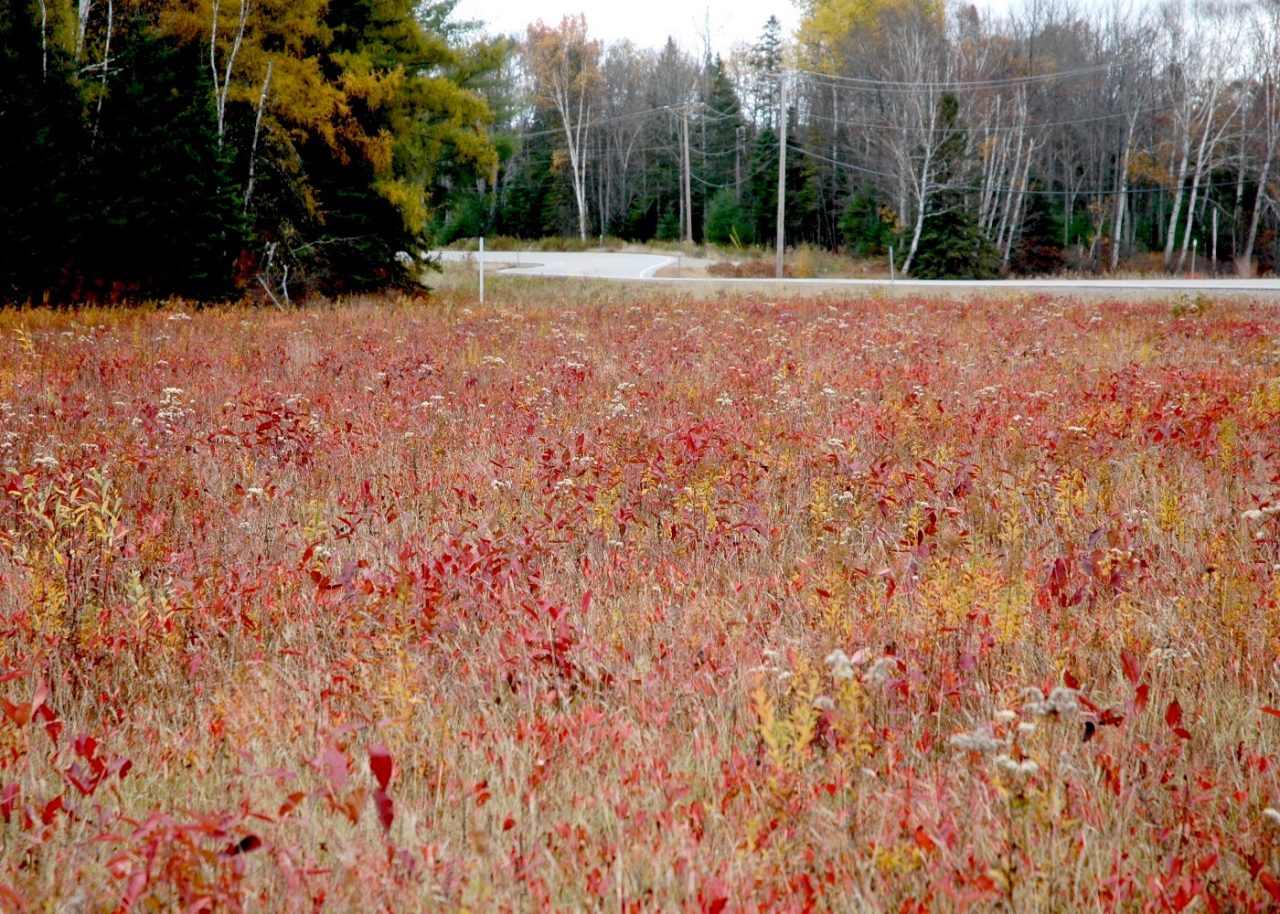
prairie in Maine with woody saplings
Prairie is the original American landscape for much of the continent and was maintained by a balance of open grazing, typically by bison, and regular fires – some wildfiles and some started intentionally. These combined to reduce tree seedlings and volunteer weed species while leaving the deep-rooted perennial grasses (graminoids) and flowering plants (forbs) unscathed. With the arrival of European settlers, intensive grazing, and the caving up of native land, much of the prairie began and continues to vanish.
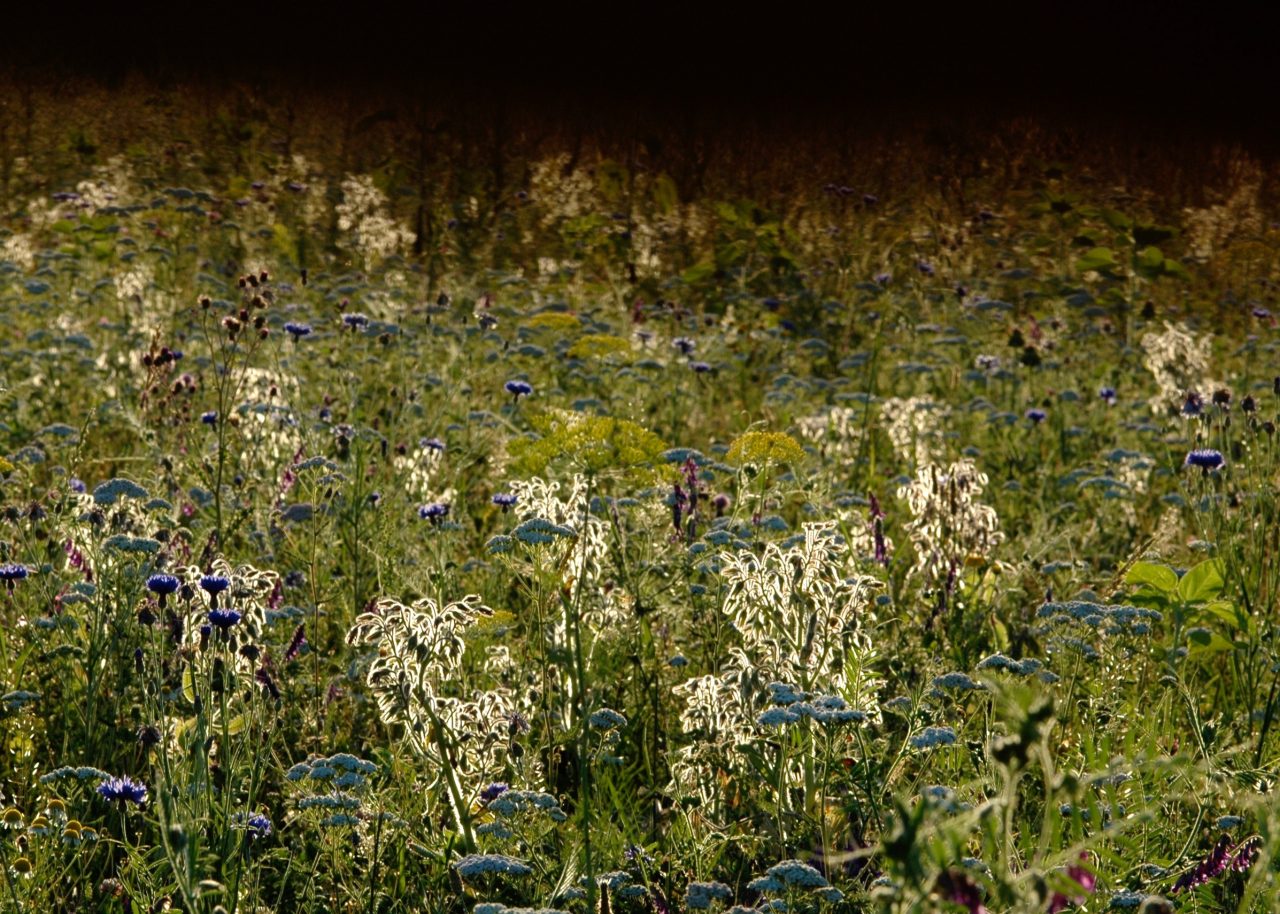
rewildering of agriculturel land in Germany
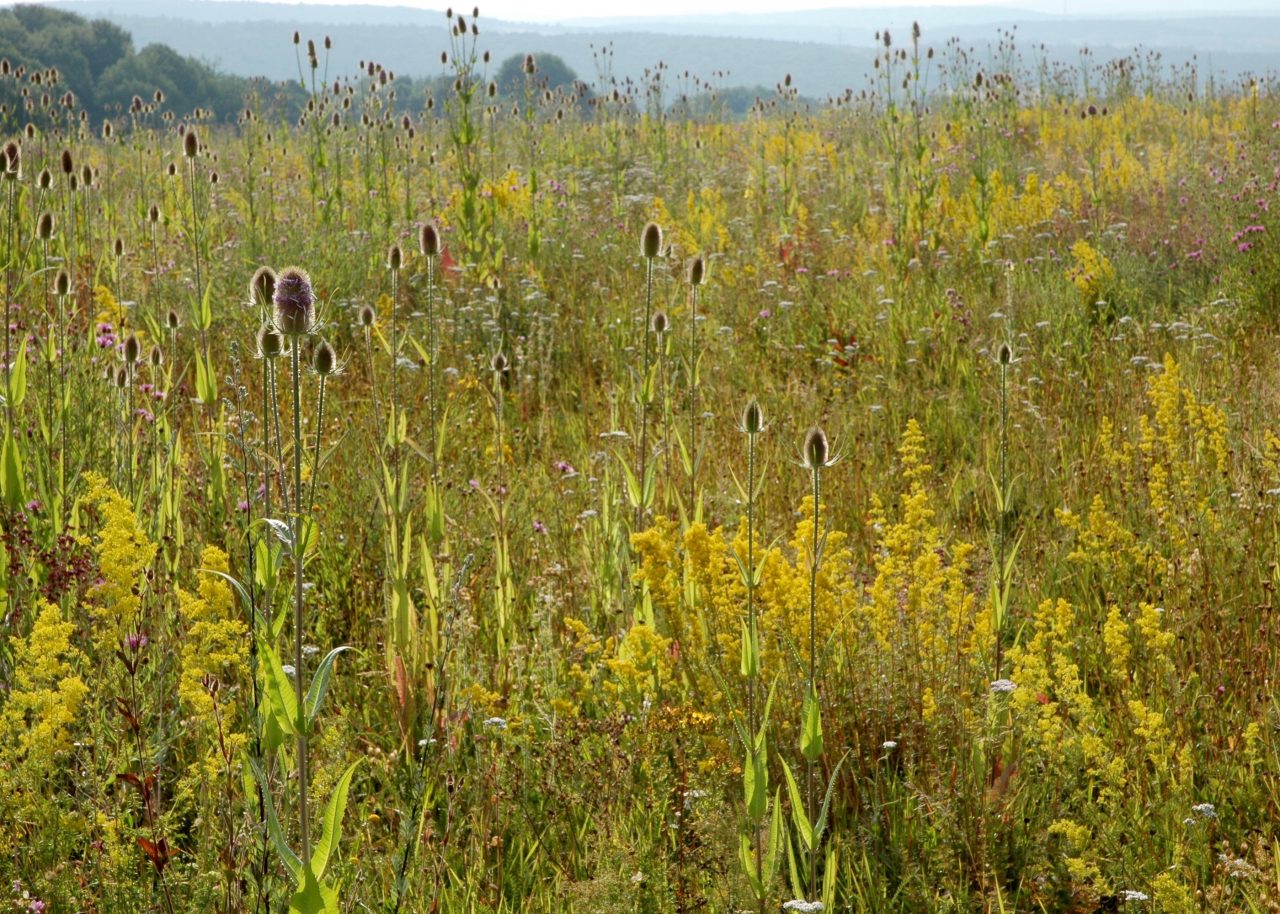
Prairie plantings differ from wild flower meadows where the latter rely on low fertility soils and a mowing regime to keep pasture grasses and weeds at bay. Prairie plantings utilise high fertility and appropriate plant selection to out compete most weeds with the rest being hand-pulled.
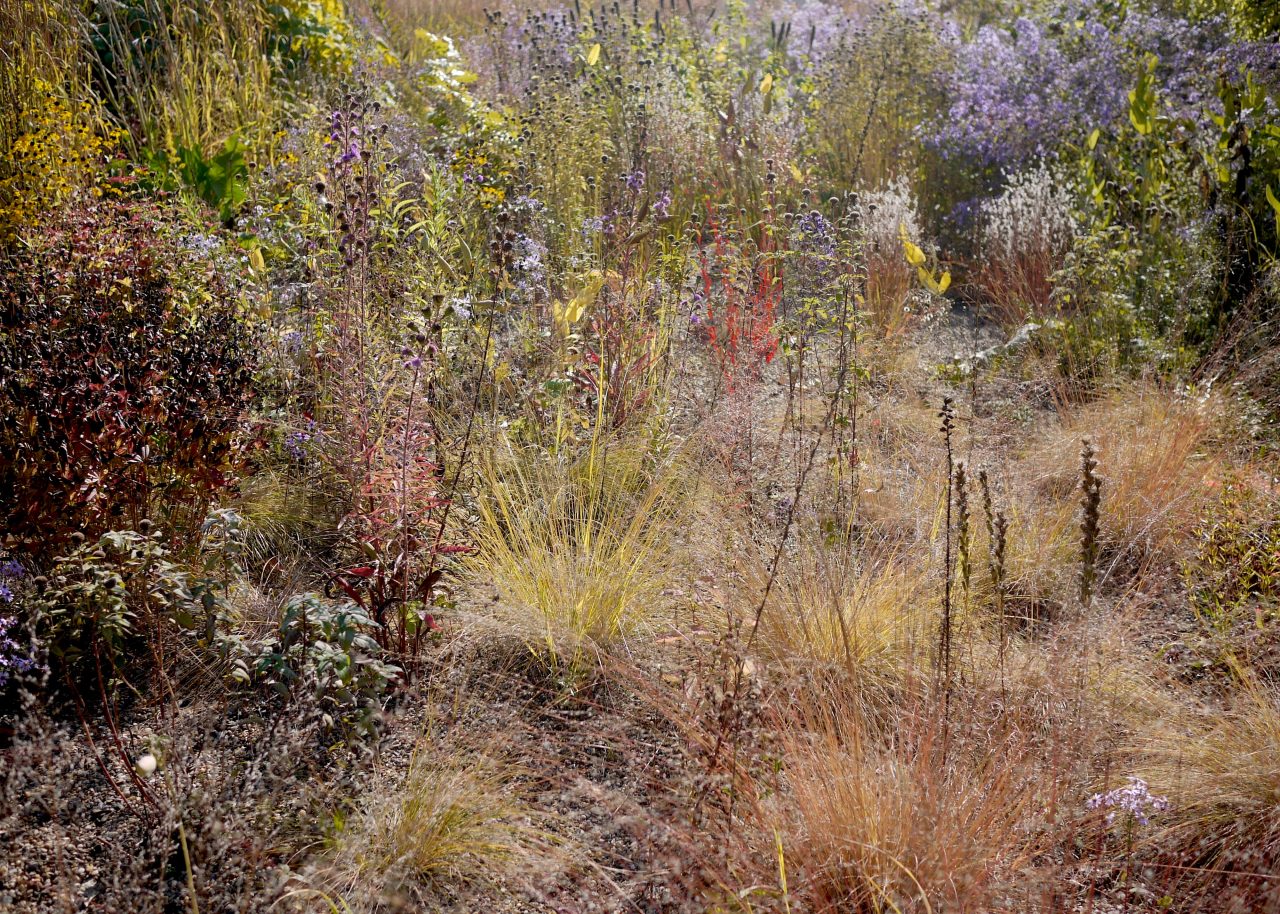
Prairie in the Botanic Garden in Wuerzburg/ Germany
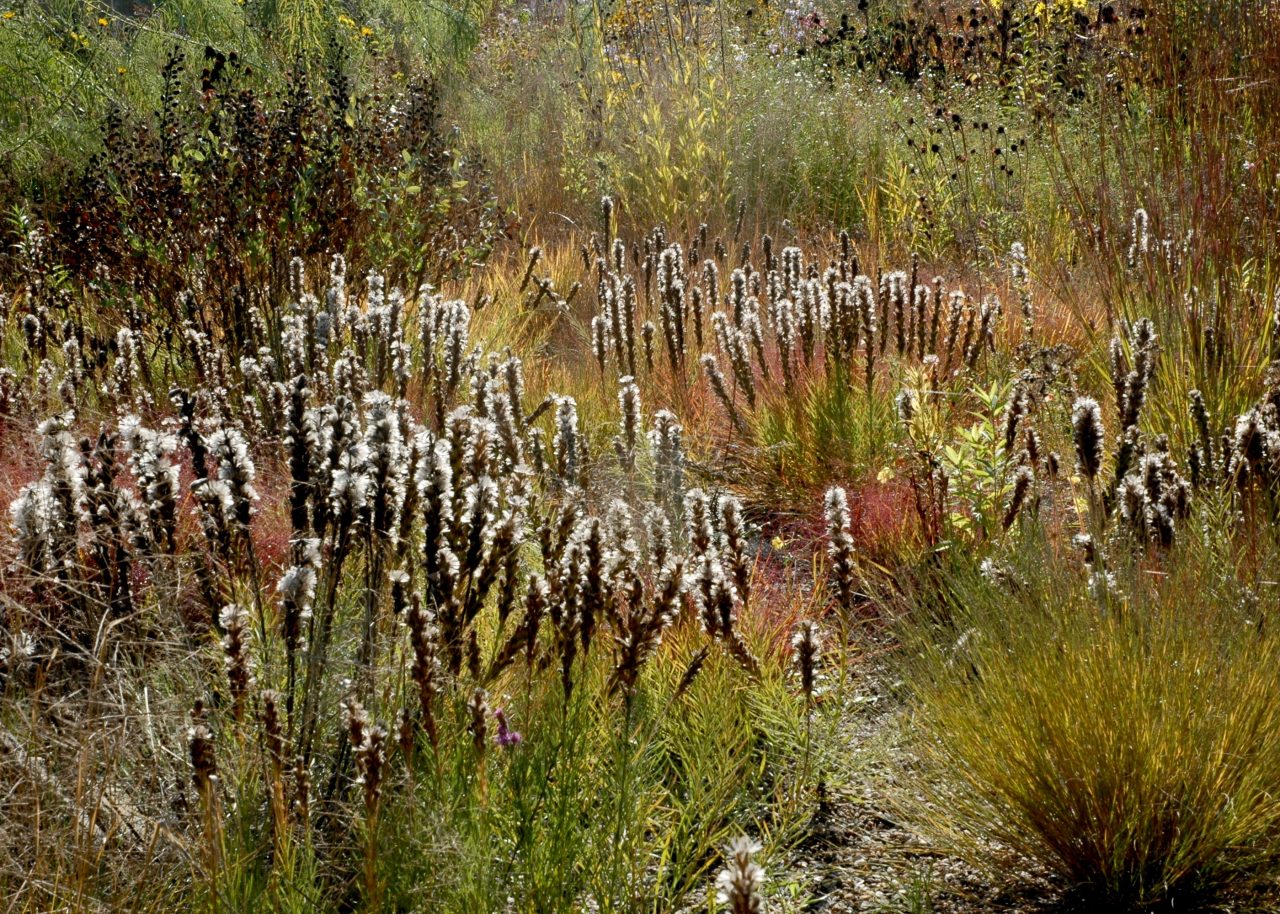
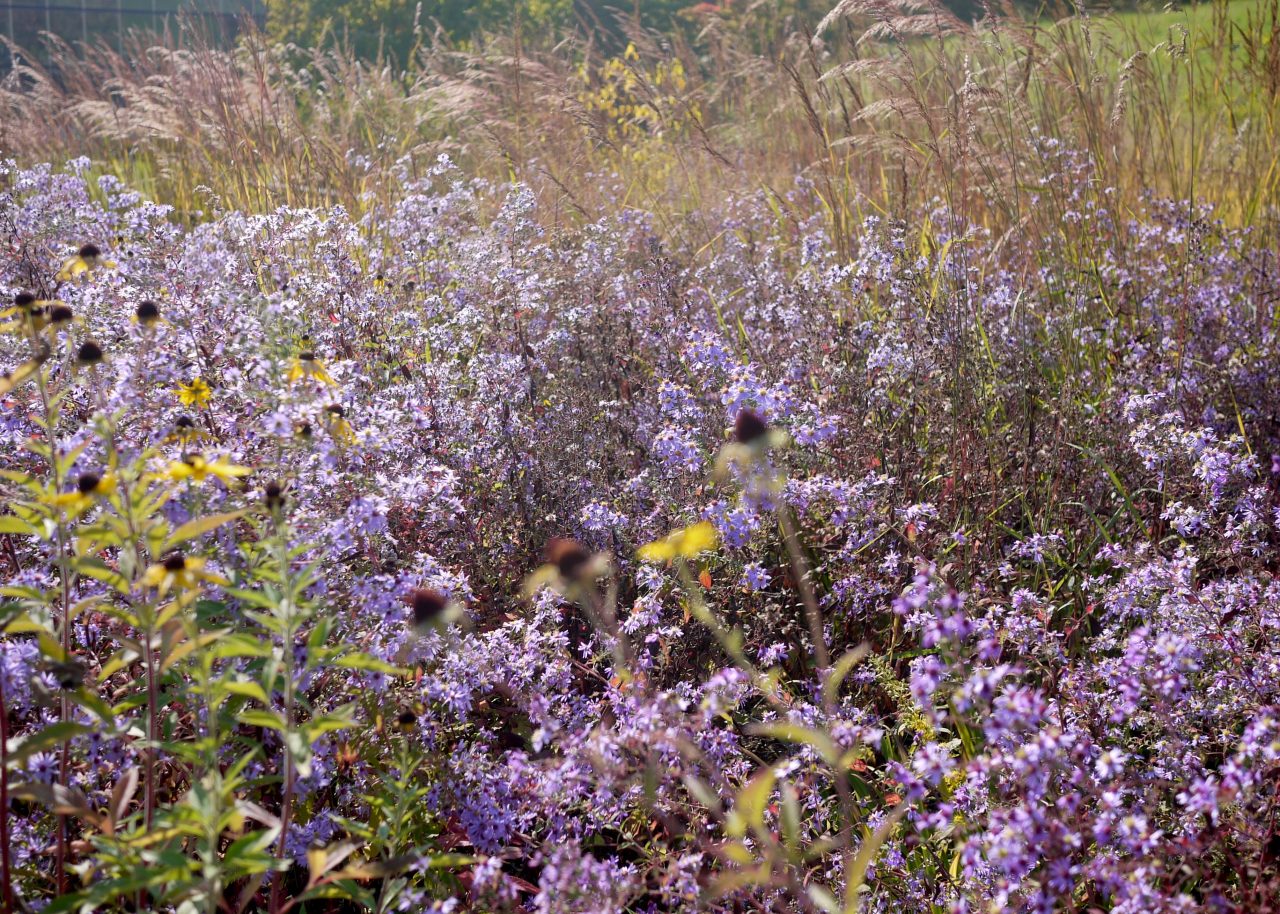
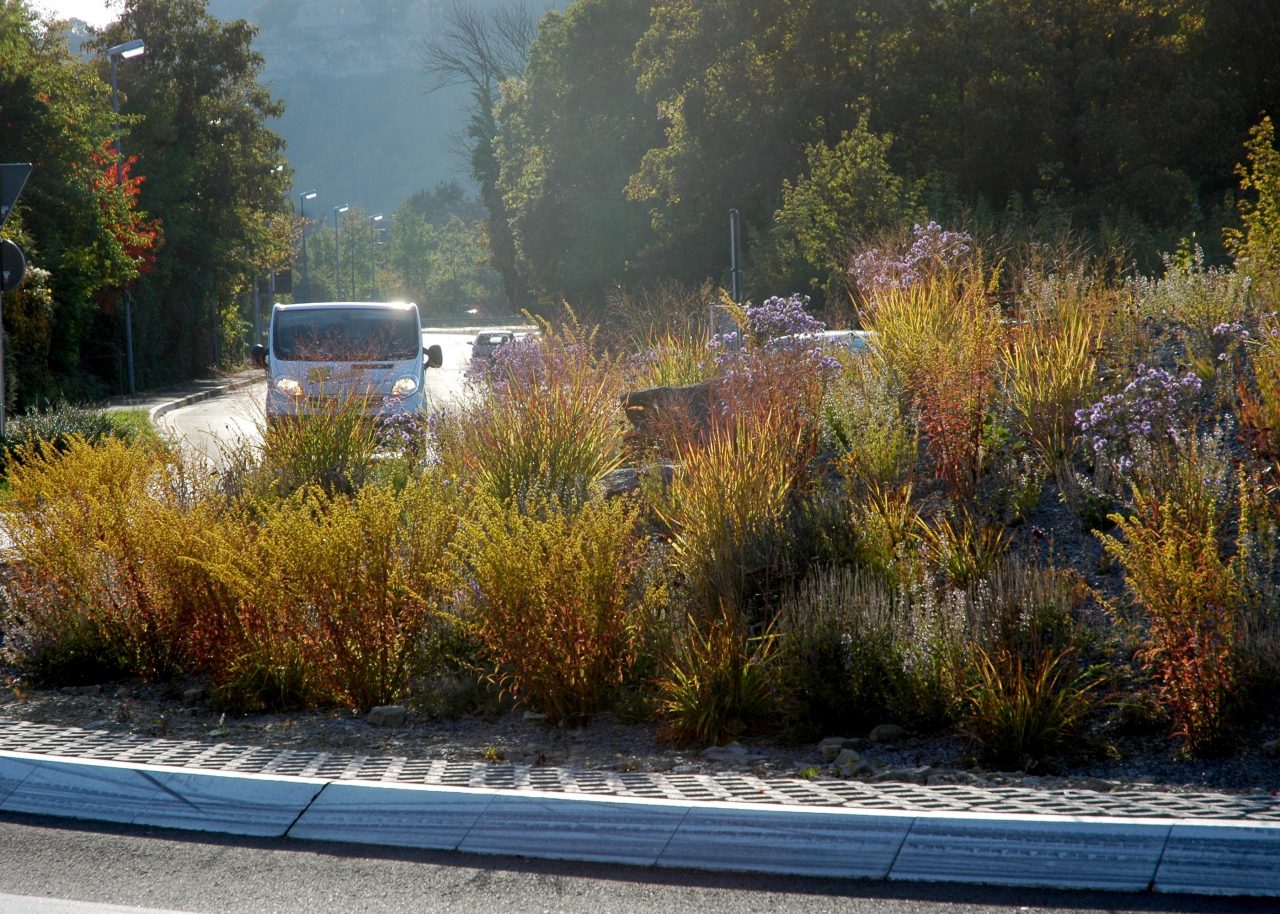
Prairie style planting/Roundabout in Germany
In an Irish context, we have similar levels of precipitation, cooler summers and warmer winters than the American Midwest or like the continental climate in Europe. This allows us to grow a wide array of the flowering perennial species extremely well with the added advantage of relatively late summer flowering when other species have faded. Our relatively cool summers can be less advantageous for the late-flower grass species which need that continental heat to get going, but even these can grow well here in a good summer and again have the added bonus of flowering late and lasting well into winter.
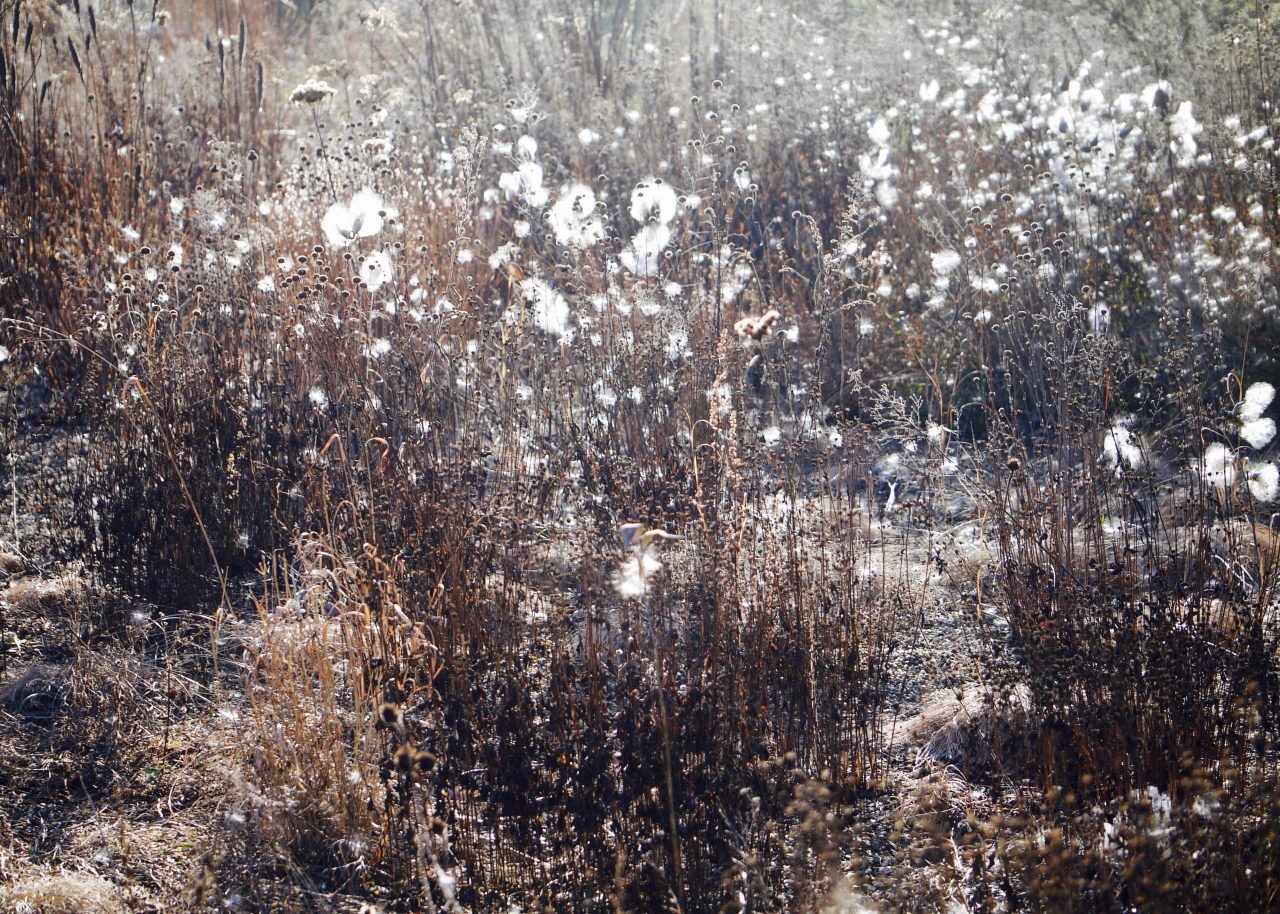
Prairie in the Botanic Garden in Wuerzburg in Winter
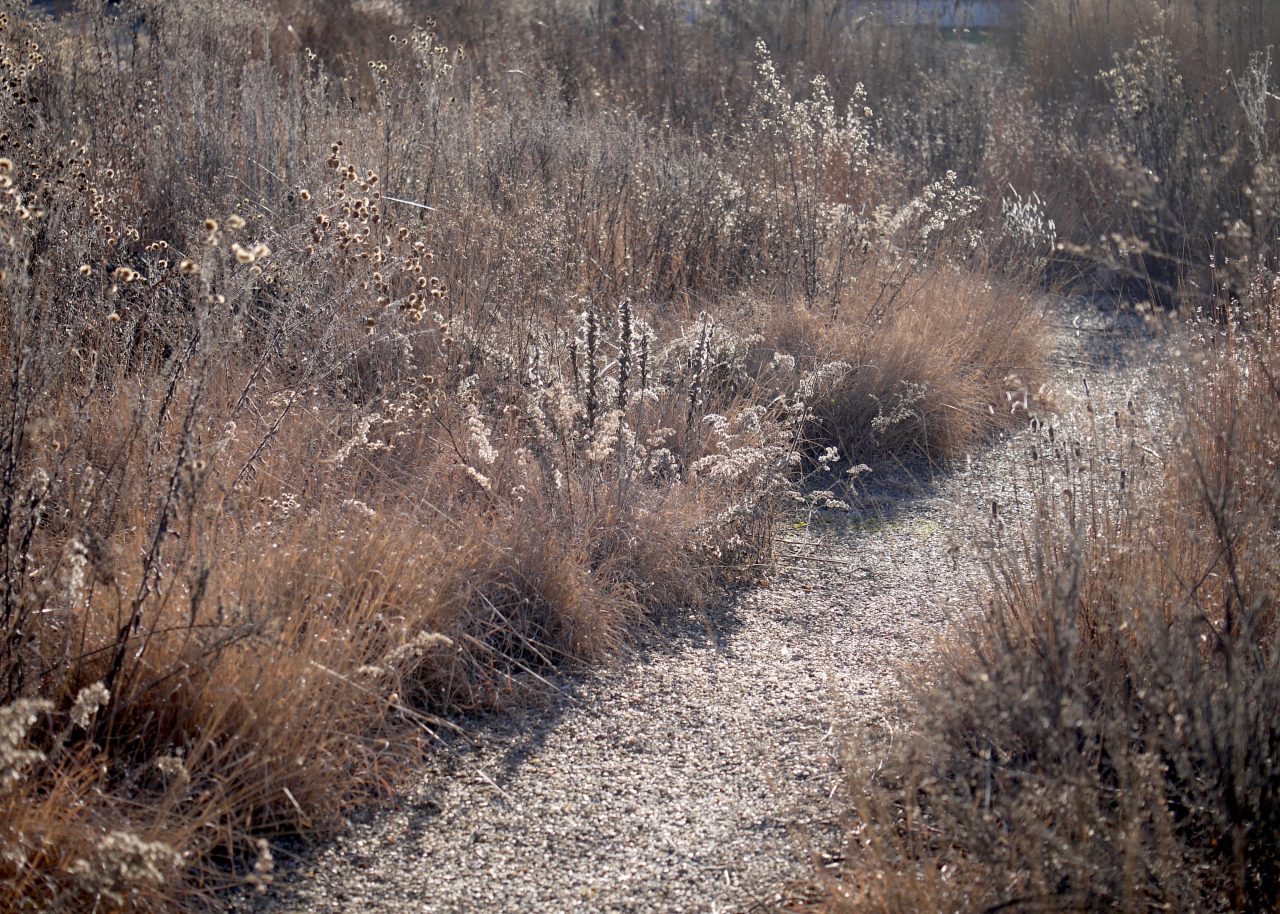
The key to a successful prairie planting is recognising the rhythm of the plants – not in the drifts and clumps of a traditional herbaceous border but repeating the same plants in an essentially randomised manner over the expanse of the planting. The viewer will notice the repetition and with it the cohesive nature of the space but without the eye being drawn to any particular focal point.
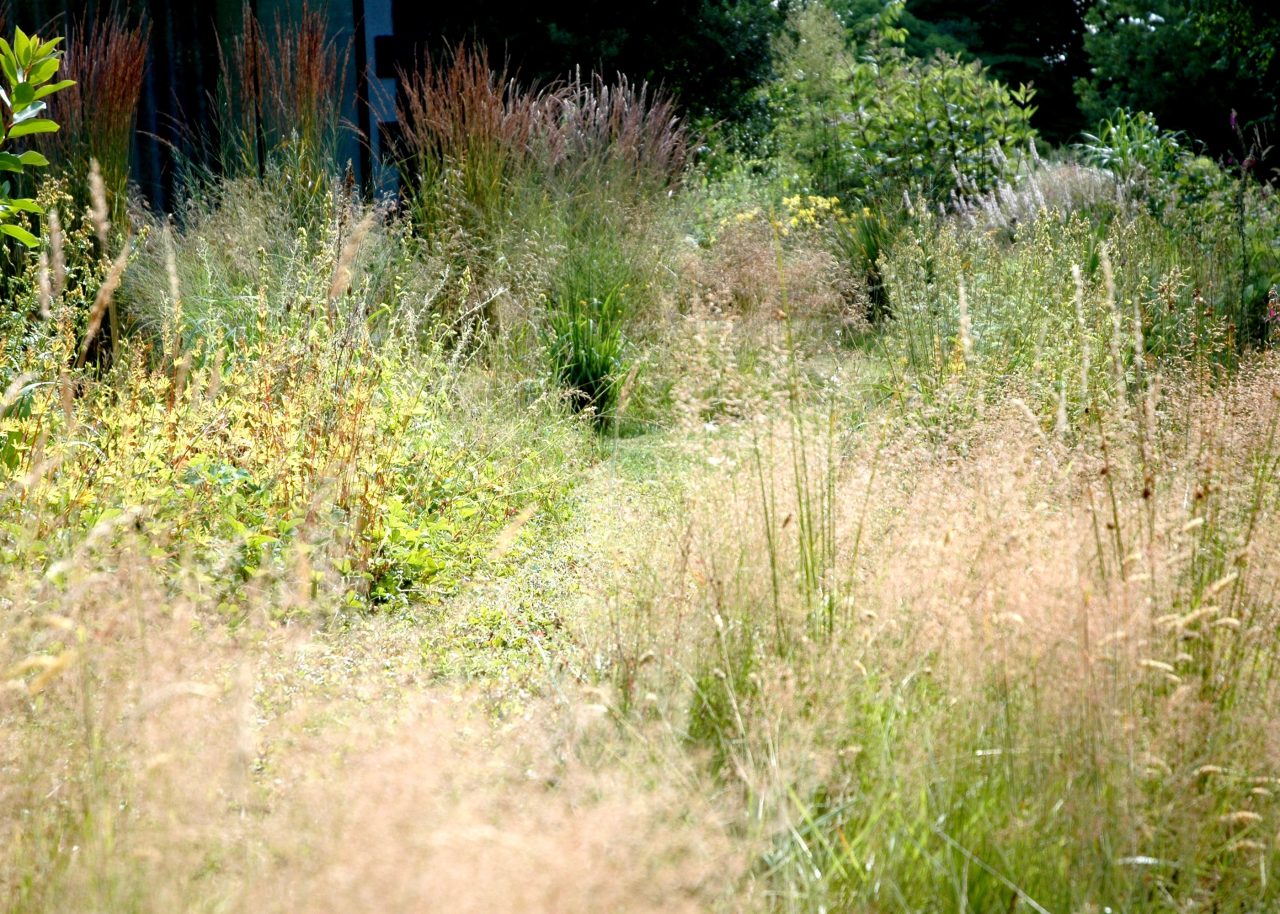
Perennial meadow planting in Glendalough
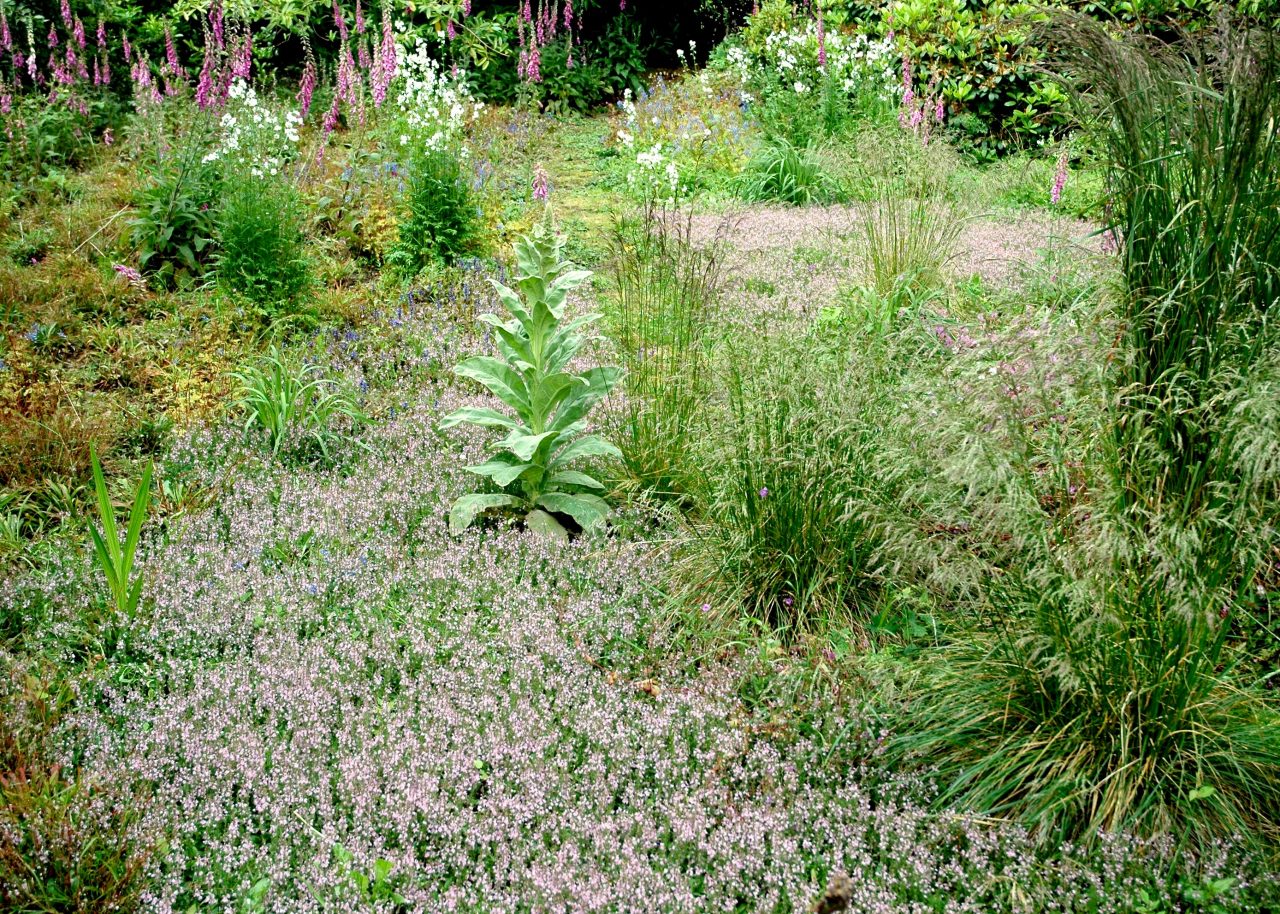
Thus a matrix planting of a selection of 1 or 2 main grasses and a mix of 6 flowering perennial species, averaging 6 plants/sq. m., again, not in blocks of the same plant, but a scattered mix of several plants repeated. Plants must be clump-forming and not invasive and can be planted close together to encourage weed suppression.
Specific plants can be selected relative to conditions – drier/wetter etc. And though relying heavily on actual American prairie plants, we can of course choose complimentary species from other parts of the world.

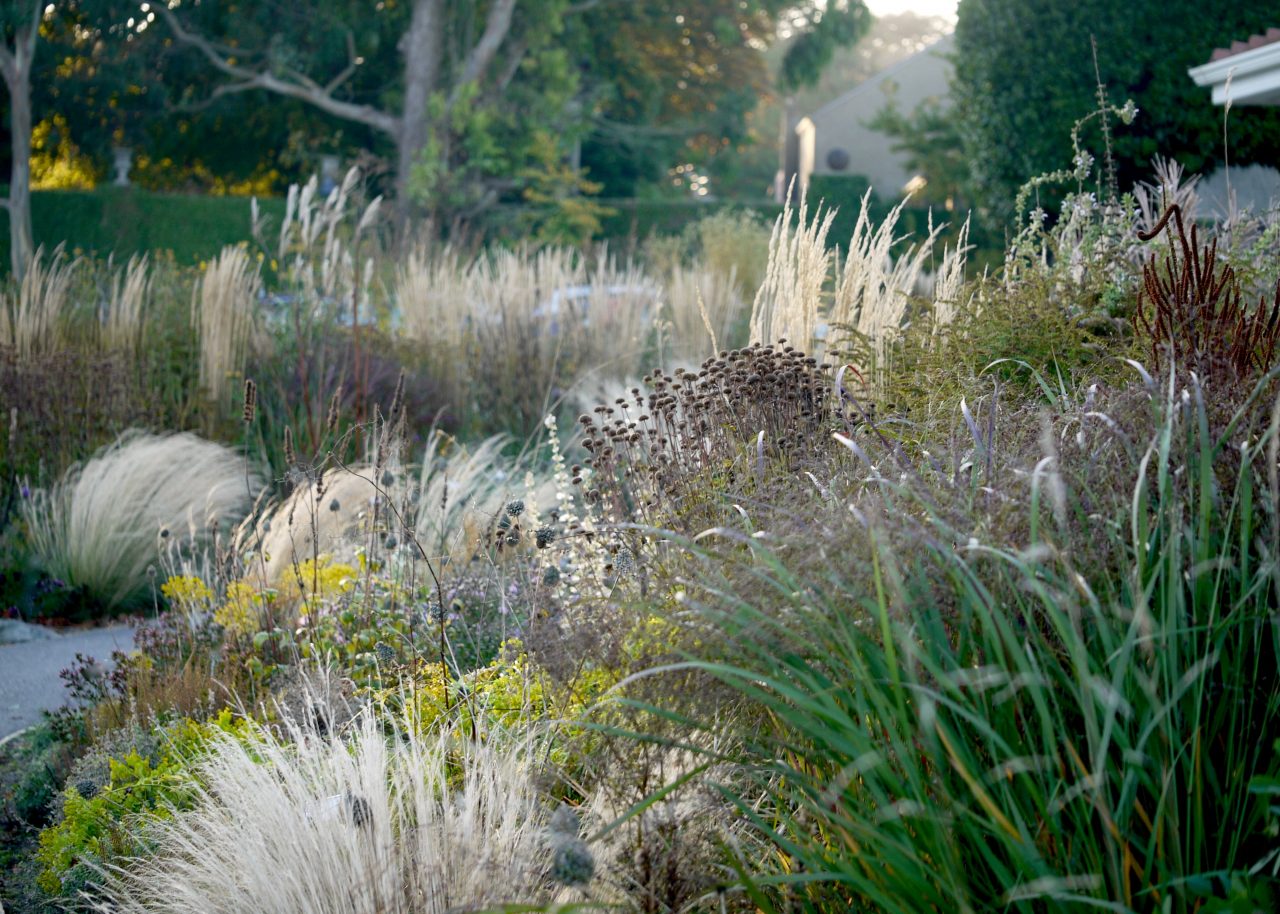
Contrived prairie planting Woodbrook golf course in summer and autumn
Some classic plants of the tall grass prairies are Sylphium perfoliatum (cup plant), Liatris pycnostachya (blazing star), Eryngium yuccifolium (snake root), Echinacea pallida (pale purple coneflower), Rudbeckia spp. (black-eyed susans), Veronicastrum virginicum (black root) and Panicum virgatum (switch grass).
These can be augmented by foreign species with similar needs such as Miscanthus, and Calamagrostis grasses and flowering perennials such as Dianthus carthusianorum, Asters, Allium sphaerocephalon, and Phlomis russeliana, or spring bulbs, to suit taste or site or season.
For heavier soils, moisture loving species can be substituted. Try Molinia as a grass paired with Sanguisorba, Filipendula, Eupatorium, Lythrum, and Euphorbia palustris.
As for soil, the key thing with any planting is to thouroughly mix your lovely new “finely graded top soil” with the poor old sub-soil you’ve just covered up. Stones and lumps make roots work harder, and the added mineral content helps avoid the soil baking dry in summer.
The principle of a prairie planting can be reduced to a few appropriate plants and accommodated in a small area. Even an ordinary narrow strip border can be given the great American treatment with the flowers of Sanguisorba bobbing amongst late-flowering grasses. Take a hint from nature and try a more naturalistic approach to your next garden project.
